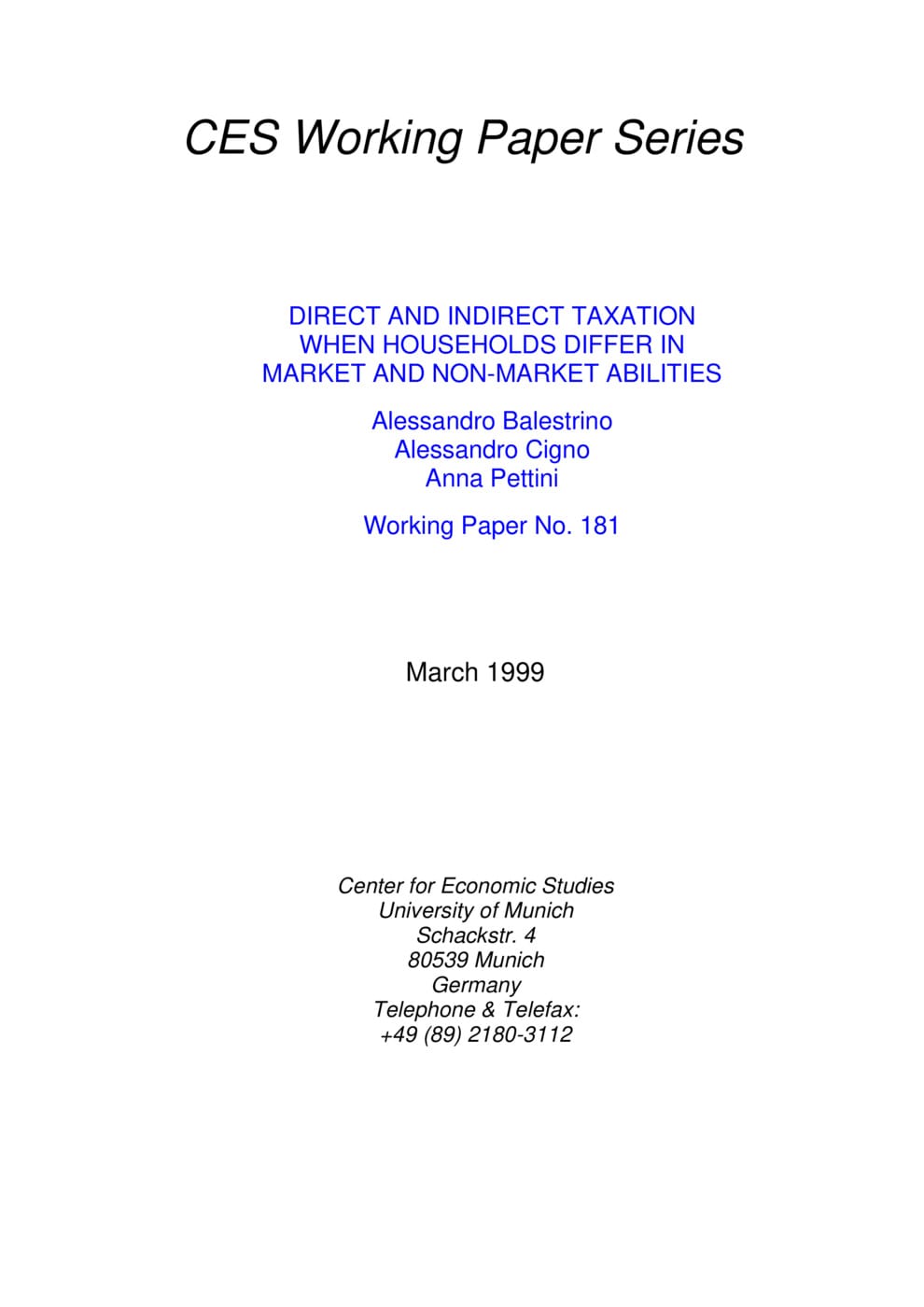Direct and Indirect Taxation when Households Differ in Market and Non-market Abilities
CESifo, Munich, 1999
CES Working Paper No. 181

How are optimal taxation rules affected when households differ in their non-market, as well as in their market skills? Where income taxation is concerned, the policy prescription applying in the case where households are differentiated only by wage rate (namely, that high-wage households should be taxed more than low-wage households, but that marginal income tax rate on the former should be zero) may be reversed when there are also differences in household production skills. Such a reversal is not very likely, however, because there are efficiency gains in subsidizing households with a comparative advantage in non-market activities. Indeed, simulations with a wide range of parameter values show that redistribution is always in favour of low-wage households, and that the amount redistributed increases with the non-market skills of the latter. If households differ in both market and non-market skills, we also find that the introduction of indirect taxation alongside income taxation my be welfare-improving, because it helps relax the incentive constraint, even when the utility function is separable in labour. This contradicts the Atkinson-Stiglitz theorem. The shift from direct to indirect taxation/subsidization allows the optimal marginal rate of income tax on potential mimickers to be different from zero. This is confirmed by simulation experiments.